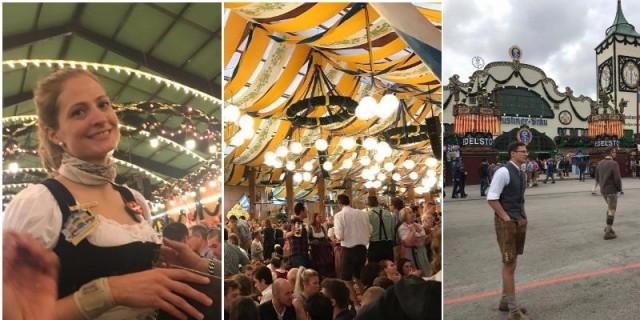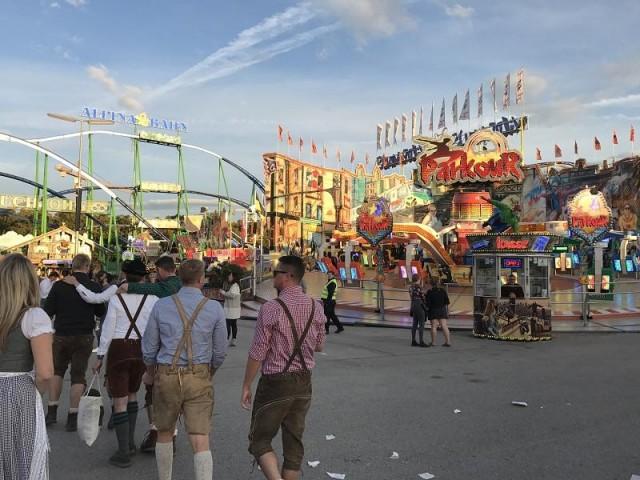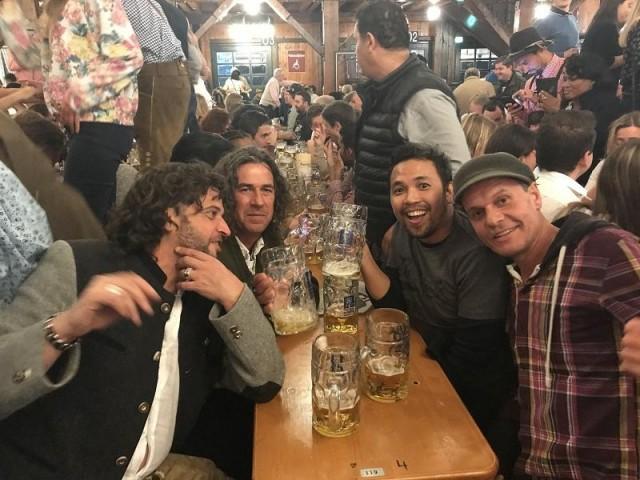I went to Oktoberfest in Munich. Here are 5 things you should know about it

The first question many people ask about Oktoberfest is why it starts in September. That’s easy enough to answer: although the festival was first celebrated on October 12, 1810, organizers have opted to start the celebrations a couple of weeks earlier to take advantage of longer and warmer days.
People must have appreciated the adjustment. Oktoberfest today — the original one in Munich, at least — starts mid-September and usually goes on for 16 to 18 days until October.
By the time it ends on the first weekend of October, wearing the traditional get-up of dirndls for women and lederhosen for men is a challenge for all but the hardiest of men and women.
When I made plans for a trip to Germany this year, Oktoberfest wasn’t exactly on my mind. But when I realized that I’ll be in Munich just in time for the annual beer extravaganza, I just knew I had to work that into my itinerary.
Here are a few things I learned during my first-ever authentic Oktoberfest experience.
READ: Here's the low-down on the 'most authentic' Oktoberfest in the PHL
1. Don’t worry if you don’t know where it is exactly

Just follow the crowds! Oktoberfest is traditionally held in a field called Theresienwiese near the center of Munich. It’s easy enough to spot, and there’s even a train station there, but even if you have no clue where it is, it’s no problem.
I made the mistake of jumping out of a station called Theresienstrasse instead of Theresienwiese. I should have known because hardly anyone else got off the train at that station, especially not anyone dressed in the traditional Oktoberfest costumes. Good thing that it wasn’t too far off from the correct place. By the time I got back to the central train station (try pronouncing: Hauptbahnhof), it was easy enough to just get behind and follow everyone else who looked like they were going to Oktoberfest.
2. Oktoberfest is bigger and grander than I could ever have imagined. I’ve read about Oktoberfest online, but I was still unprepared at what greeted me when I finally got to the place.
Oktoberfest is a bit like an amusement park. It’s like Star City on steroids. Blinking lights sit atop different booths, inviting people to play games or take a ride on roller coasters or Ferris wheels.
Other booths sell all kinds of German food, including bratwursts, currywursts, other kinds of sausages, salted pretzels, fruits dipped in chocolates, softdrinks, wine and other spirits. Still other kinds of booths hawk festival merchandise and souvenirs; everything from hats, pins and keychains to full dirndl and lederhosen sets.
This is why, despite being known primarily as a beer festival, Oktoberfest is really for everyone. I saw entire families, including grandparents with toddlers and kids going around and enjoying themselves. There were young men, young women and mixed groups; big companies touring their VIP clients, couples both gay and straight, and even school-aged kids running around the huge field.
3. If you’re here for the beer, head for the tents

Although there are a number of smaller tents scattered around Theresienwiese, the action is at any of the big Bavarian breweries that have their own tents where they serve their own brews.
Upon the advice of an Oktoberfest regular that I read online, I chose to stay at the Augustiner Festhalle. While they’re called “tents,” the place is more like a massive warehouse, with hundreds of wooden tables and chairs sitting side by side. Every square inch of space was taken; I couldn’t imagine how I was ever going to find a place to sit.
The trick? Politely ask one of the waittresses to find a place for you. They’re extremely busy, as you can imagine, as they have to serve literally hundreds, maybe even thousands of customers during the day. But I took my chances with a pretty waitress named Annedore. It’s easier because it was just me; it’s unlikely you’re going to get a table if you’re more than two or three.
Annedore led me to a table with a nice enough assembly of gentlemen who immediately welcomed me as if they had been waiting for me all along. And that was when the fun began.

4. Be prepared to spend. Entrance to Oktoberfest and to the tents is free. You start spending as soon as you choose to buy anything. And of course, you’re going to have to spend if you want any beer.
At the Augustiner tent, a beer stein or mug is at 10.90 euros — roughly P660 — plus tip. So a one-liter beer could easily cost you over P700. And that’s just for the beer. If you want pulutan or anything to eat, you have to buy those either from the food stall inside the tent, or from the roving waiters and waittresses selling pretzels and other kinds of beer chow.
I bought a stein and toasted with my new drinking buddies with Prost! They asked me all the usual stuff, like where I was from and what I was doing in Germany. In turn, I asked them what they liked most about Oktoberfest. Steffan, a Bavarian who has been coming to the festival for years, merely gestured at the activity around him and smiled. “How can you not like all of this?” he said.

5. Take part in all of the Oktoberfest traditions and just enjoy yourself. I’ve been to several Oktoberfest celebrations in Manila, especially the one organized by the German Club in the Philippines and held annually at the Sofitel Philippine Plaza, and I gotta say, these celebrations are extremely faithful to the original. At the Augustiner and all the other tents, there is a live band that plays all the tradtional German-beer-drinking songs, especially the most famous one, “Ein Prosit.”
I took part in several rounds of singing with my beer buddies, even though the lyrics are in German and I was basically just mumbling the words, but the spirit of camaraderie and togetherness is palpable.
The very idea of Oktoberfest is the celebration of unity and gratitude for the blessings of life, and though some might argue that you don’t really need alcohol for that, the Germans are certainly on to something if they’ve been celebrating something like Oktoberfest for over 200 years. — LA, GMA News
German Club Manila will host a two-day Oktoberfest in Manila at the Sofitel Philippine Plaza. Check this out for more details



